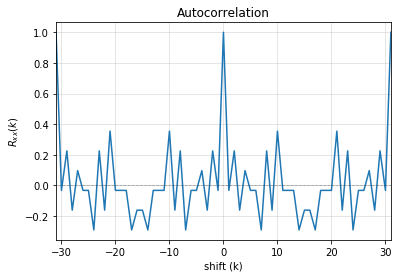

That pattern is all 0’s when using XOR gates, or all 1’s when using XNOR gates as your feedback gate. Therefore there is only one pattern that cannot be expressed using an LFSR.

If you think about it, all possible patterns of something that is N-bits long is 2 N. The longest possible number of iterations for an LFSR of N-bits is 2 N-1. Longer LFSRs will take longer to run through all iterations.
 The maximum possible number of iterations of any LFSR = 2 Bits-1. Since 1 XNORed with 1 will always produce 1, the LFSR will stop running. A pattern of all 1’s cannot appear when the taps use XNOR gates. Since 0 XORed with 0 will always produce 0, the LFSR will stop running. A pattern of all 0’s cannot appear when the taps use XOR gates. You can figure out the next state by knowing the position of the XOR gates as well as the current pattern. txt file is free by clicking on the export iconĬite as source (bibliography): Linear Feedback Shift Register on dCode. The copy-paste of the page "Linear Feedback Shift Register" or any of its results, is allowed (even for commercial purposes) as long as you cite dCode!Įxporting results as a. Except explicit open source licence (indicated Creative Commons / free), the "Linear Feedback Shift Register" algorithm, the applet or snippet (converter, solver, encryption / decryption, encoding / decoding, ciphering / deciphering, breaker, translator), or the "Linear Feedback Shift Register" functions (calculate, convert, solve, decrypt / encrypt, decipher / cipher, decode / encode, translate) written in any informatic language (Python, Java, PHP, C#, Javascript, Matlab, etc.) and all data download, script, or API access for "Linear Feedback Shift Register" are not public, same for offline use on PC, mobile, tablet, iPhone or Android app! Ask a new question Source codeĭCode retains ownership of the "Linear Feedback Shift Register" source code. Choose which bits will be used by the XOR function and launch the iteration(s).
The maximum possible number of iterations of any LFSR = 2 Bits-1. Since 1 XNORed with 1 will always produce 1, the LFSR will stop running. A pattern of all 1’s cannot appear when the taps use XNOR gates. Since 0 XORed with 0 will always produce 0, the LFSR will stop running. A pattern of all 0’s cannot appear when the taps use XOR gates. You can figure out the next state by knowing the position of the XOR gates as well as the current pattern. txt file is free by clicking on the export iconĬite as source (bibliography): Linear Feedback Shift Register on dCode. The copy-paste of the page "Linear Feedback Shift Register" or any of its results, is allowed (even for commercial purposes) as long as you cite dCode!Įxporting results as a. Except explicit open source licence (indicated Creative Commons / free), the "Linear Feedback Shift Register" algorithm, the applet or snippet (converter, solver, encryption / decryption, encoding / decoding, ciphering / deciphering, breaker, translator), or the "Linear Feedback Shift Register" functions (calculate, convert, solve, decrypt / encrypt, decipher / cipher, decode / encode, translate) written in any informatic language (Python, Java, PHP, C#, Javascript, Matlab, etc.) and all data download, script, or API access for "Linear Feedback Shift Register" are not public, same for offline use on PC, mobile, tablet, iPhone or Android app! Ask a new question Source codeĭCode retains ownership of the "Linear Feedback Shift Register" source code. Choose which bits will be used by the XOR function and launch the iteration(s).







 0 kommentar(er)
0 kommentar(er)
